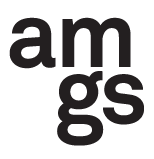Textile/furniture project with the support of Flanders State of the Art
Wander: old English wandrian “ move about aimlessly, wander,” from west germanic *wandran “ to roam about”
Way: Old English weg “road, path; course of travel; room, space, freedom of movement; “ also, figuratively, “course of life” especially in plural “habits of life” as regards moral, ethical, or spiritual choices, from proto-germanic *wegaz “ course of travel, way”
The idea is to lead an investigation on the textile processes done in Belgium industries and to produce textile pieces as an outcome of this investigation.
I’m highly interested in the way nomad communities use textiles as to create spaces for living. Based on this I want to create a temporary space in textile based on this traditional nomads cultures.
Textile is a very extensive medium that has been constantly transforming and taken into different paths. Because of its history and its presence in daily use, in private and collective contexts, textile is a witness of social phenomena, related to the fields of design, performance, art or architecture. Traditional textile has survived long centuries and is one of the most representative forms of cultural production.
Since 1830, Belgium has been an important textile industry centre. Over the years the country has continued to diversify its heritage in terms of traditional textile activities, fibers of spinning mills knitting manufacturies, in many escales have been created. This elements of forming heritage are my main interests in the history of Belgium.
The itinerant space consists of five pieces where each one is designed to function as modules that can be repeated infinitely and create a space of the desired size.
-Floor module # 1 and 2: two different pieces, square of 168cm x 168cm, 100% wool
-T: This is the wall that is composed of a T-shaped structure, has a fabric of 170cm wide by 350m high, its height is variable can from 200cm to 350cm. The fabric is made in tricot, with wool from Belgium, has the natural color of wool. The fabric is streched by two tubular fabric which is filled with sand, these creates the weight-counterwehight balance of the “wall” and give it structure to the.
-S: this piece is an S-shaped module, it is formed by a metallic structure and three textile panels, each one is: 170cm wide and 5oocm long. The fabric is streched by a tubular fabric which is filled with sand. Be create the weight-counterwehight balance of the “wall” and give it structure.
Collaboration project with:
Ceetex, Charlotte Marembert, Sam Van Gils, Dyaln Van Eleweck, Polyprint, Maarten de vrieze, Tom Hallet, Juan Pablo Plazas, Elkin Dries and Diego Fernández.
Photos of Process: Alexandra Colmenares Cossio















